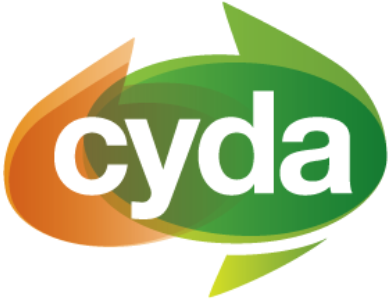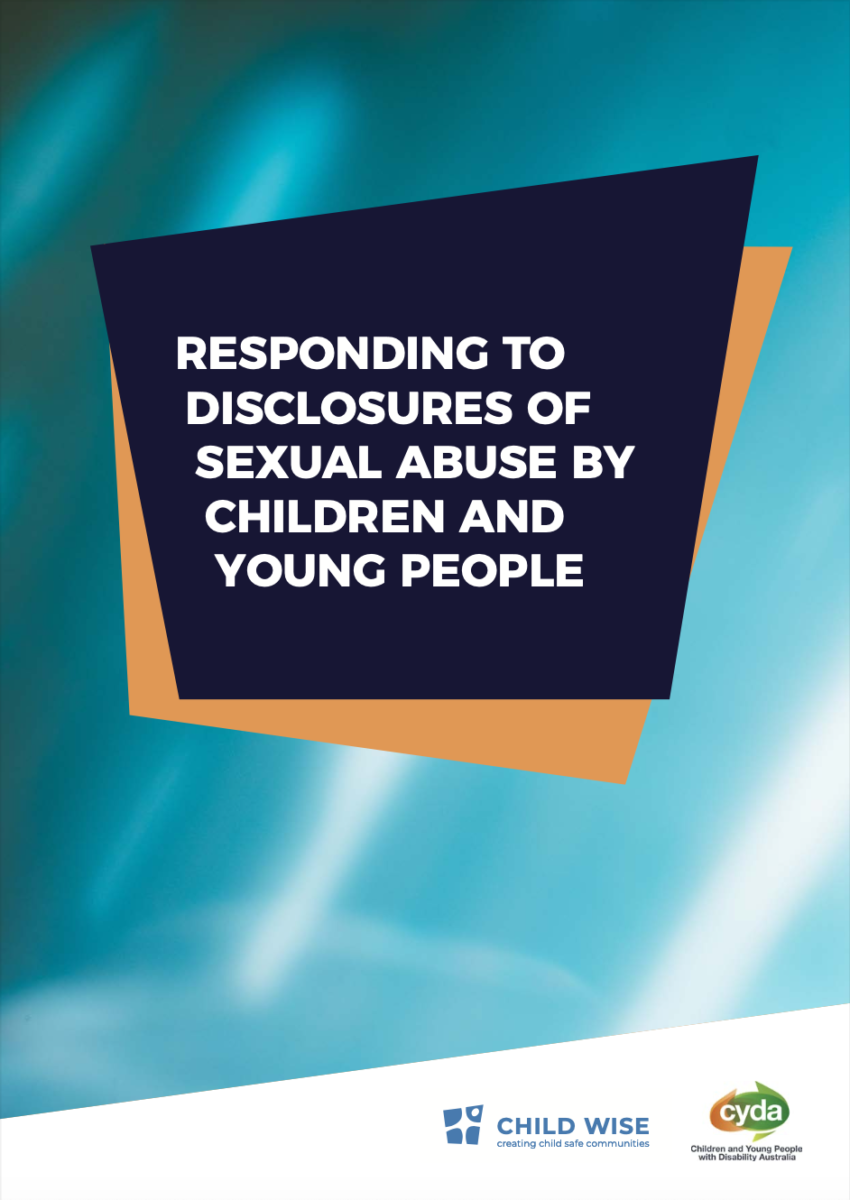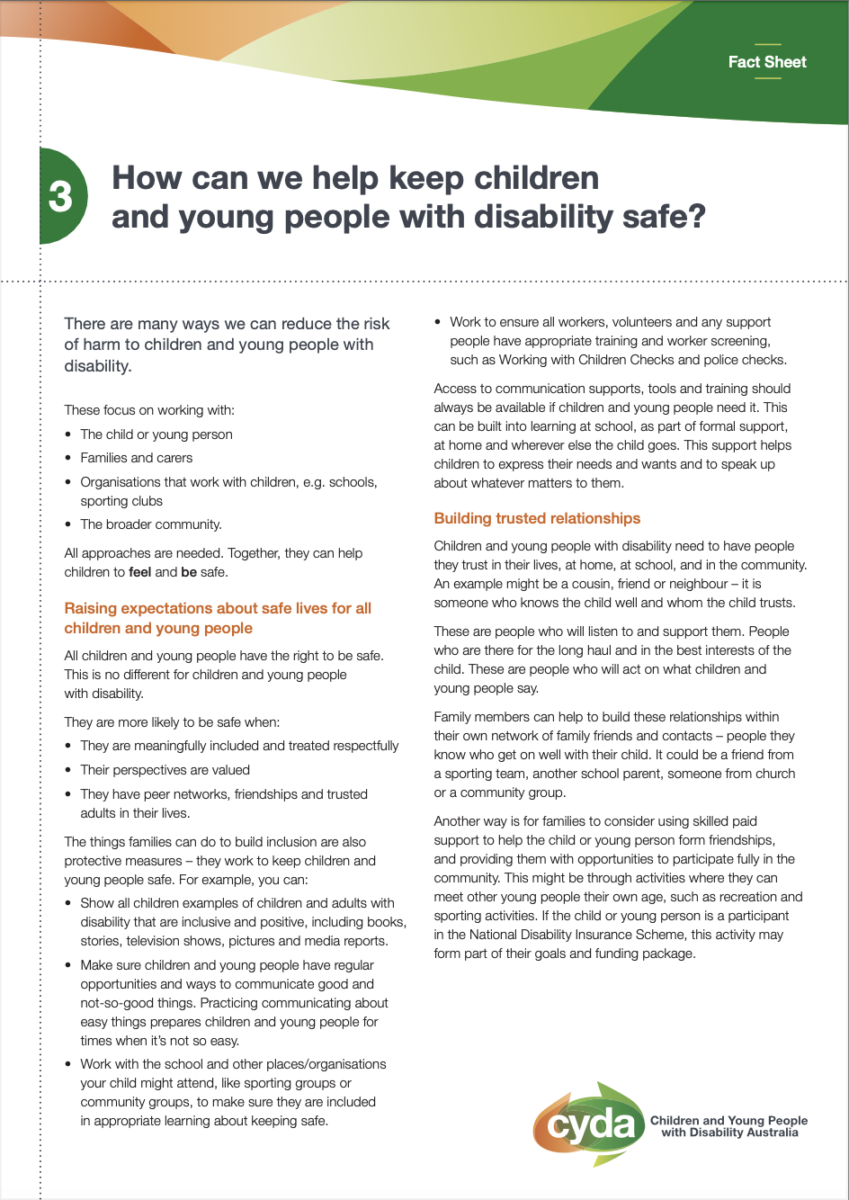Resources on child safety and prevention of abuse
⚠️ Content note: This page and the resources contained make references to violence, abuse, neglect, exploitation and child sexual abuse.
On This Page
About these resources
During the recent Disability Royal Commission and the Royal Commission into Institutional Responses to Child Sexual Abuse, CYDA made a number of resources to help people know about the issues.
The Disability Royal Commission is now working on their final reports.
The Royal Commission into Institutional Responses to Child Sexual Abuse produced its final report in 2017 and resulted in a Redress Scheme, which you can learn about here.
Responding to Disclosures of Sexual Abuse by Children and Young People
Factsheet: What is violence, abuse, neglect and exploitation of children and young people with disability?
We want children and young people with disability to live in communities where they are happy and safe – where there’s someone looking out for them, they know their neighbours, and they can get on with playing, learning and having fun with family and friends.
Sadly, we know that abuse and neglect of children and young people with disability happens in all the places where they live their everyday lives – in their homes, schools, playgrounds, libraries, swim centres and the local shops.
Simply having a disability doesn’t increase the risk of harm occurring. The risk increased by having a greater reliance on others for care and support, being socially isolated, and lacking ways to communicate with someone who can help.
It is important to learn ways to reduce risk and know how to respond if harm occurs.
Factsheet: What to do when harm occurs - or you suspect it
Harm to a child can happen anywhere – including at school, a hospital, playground, shopping centre, park or disability service.
Children and young people with disability experience violence, abuse, neglect and exploitation from both people they know and from strangers. They can also experience these things because of the way some systems, such as schools or organisations, are set up.While some types of harm may be more visible, such as a child being physically hurt, other types of harm are less so; for example, where a child is excluded from an activity.
All people in contact with children and young people need to know what harm looks like and what to do when they see it occur. This includes parents, neighbours, other children, friends, teachers, support workers, sports coaches and therapists.
This fact sheet will explain what to do if you see harm occur or if you suspect harm may be occurring.
Factsheet: How can we help keep children and young people with disability safe?
- the child or young person
- families and carers
- organisations that work with children, e.g. schools, sporting clubs
- the broader community
All approaches are needed. Together, they can help children to feel and be safe.
Additional resources for organisations
Everyone has a right to safety when engaging with organisations. Extra resources CYDA developed with the Australian Government to help implement the National Principles for Child Safe Organisations were released in 2025.
These educational videos were designed to improve understanding about how to make organisations safe for children and young people with disability. They include information for staff and volunteers about creating inclusive and safe environments, and for children and young people with disability about their rights.





